Google’s 2-in-1 Pixel Tablet Doubles as a Smart Hub
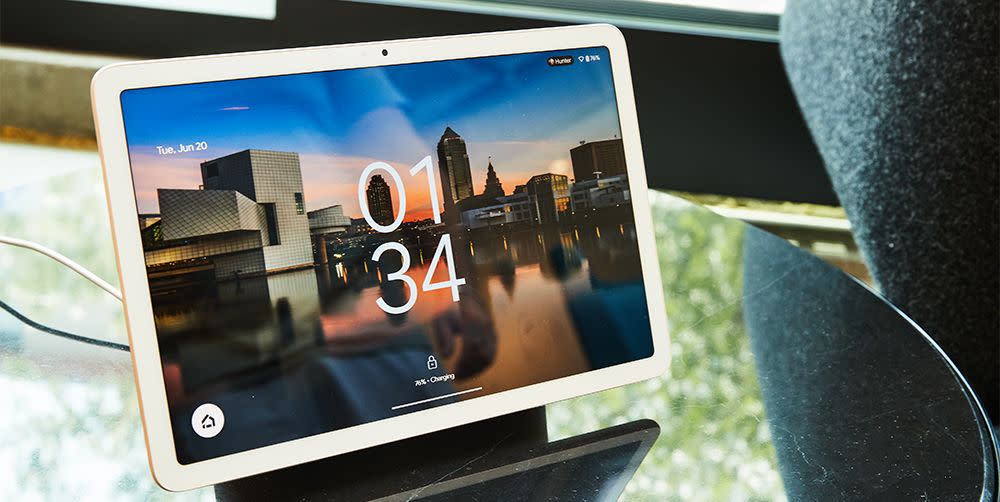
"Hearst Magazines and Yahoo may earn commission or revenue on some items through these links."
Google’s new Pixel Tablet feels like the next evolution for the space thanks to its extensive 2-in-1 functionality. This standalone slate runs on the powerful new Tensor G2 chip which takes up minimal space—resulting in a sleek device that offers smooth performance for watching movies or playing the latest mobile games. Once you exhaust the tablet’s 12-hour battery life (more like 10 in real-world use), simply line the magnets on the back of the device up with those on its included charging base to convert it into an always-on smart display. Not only does this provide a streamlined storage and charging solution but speakers built into the dock can fill a room with booming audio. But is this versatile combination enough to make it worth $499? Here are my thoughts after two full weeks of daily use.
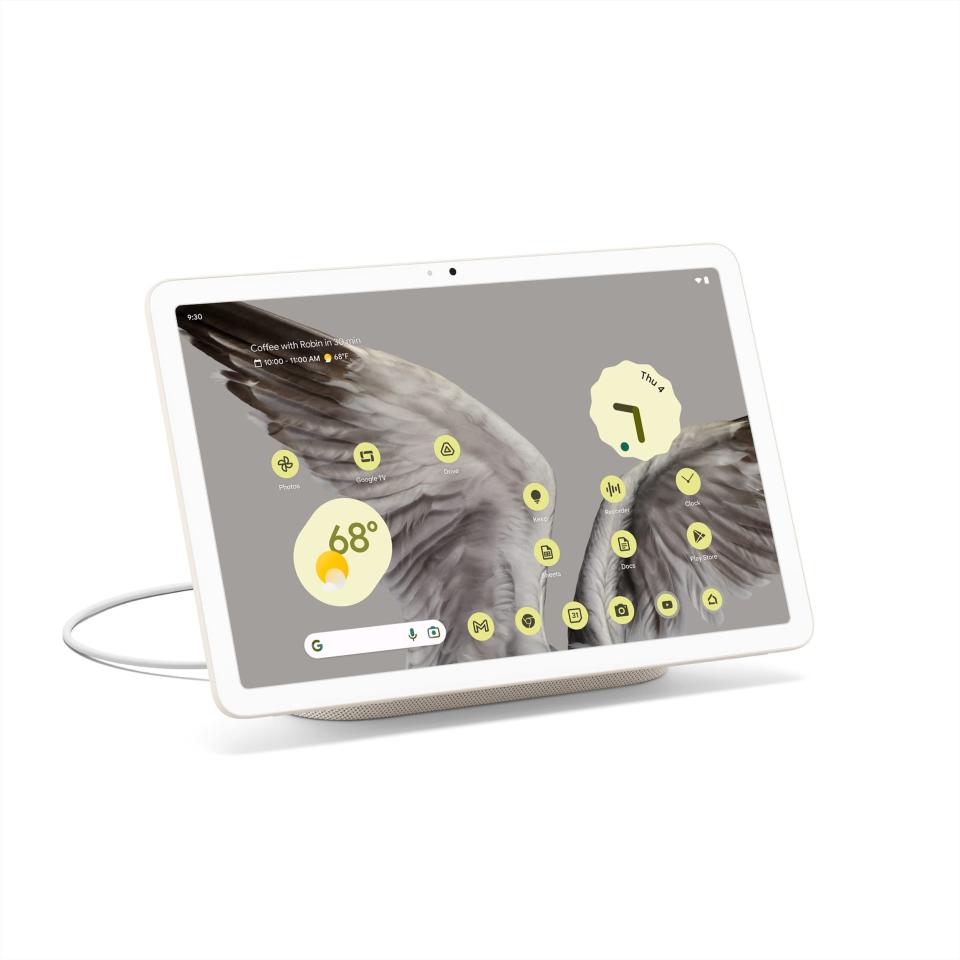
Pixel Tablet with Charging Speaker Dock (128 GB)
$499.00
amazon.com
Ingenious 2-in-1 Design Ensures the Tablet Is Always Ready to Use
Unboxing the tablet, you’re greeted by a sleek 11-inch slate in one of three colors—porcelain (light), hazel (dark), or rose (blush). At just over one pound, it feels light compared to other Android tablets such as a Samsung Galaxy or an Amazon Fire. Sure, the Pixel’s textured aluminum doesn’t feel as premium as an iPad, but it’s still incredibly grippy and comfortable to hold for lengthy periods. I found its 2560 x 1600 LCD display plenty sharp to read books and watch movies without straining my eyes. While I immediately noticed the lack of an expandable SD card port (a major advantage Android often has over Apple), the simplified control layout works in its favor. There’s a metallic volume rocker switch and flat power button just above it located on the lefthand side of the tablet. A sole USB-C port is positioned along the bottom edge. I’m not a fan of how flush the power controls rest against the siding, however its built-in fingerprint scanner makes locking and unlocking the Pixel Tablet a dream.
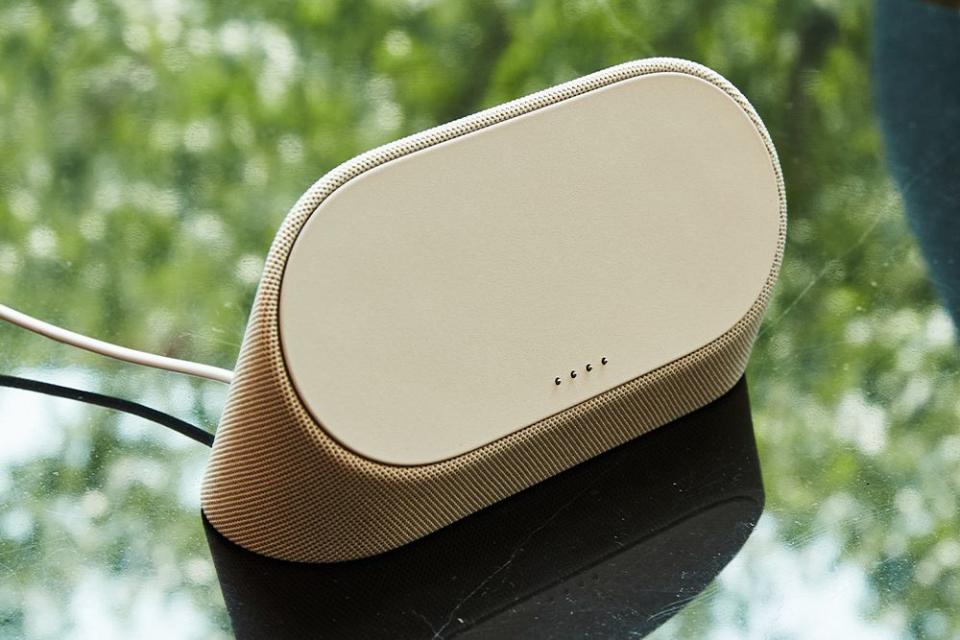
It also comes with a docking station, which includes a 44mm full-range speaker. It greatly enhances the bass and overall volume from the tablet’s more limited built-in speakers. Once the magnets on the backside of the tablet make contact with this base, the audio is handed off to the external speaker system. Meanwhile the screen itself enters a hub mode that displays pictures, tips, as well as essential information like the date and time. This seamless transition from tablet to hands-free smart hub ensures that the Pixel is always juiced up and ready. Some of the standby functionality it provides is the ability to watch videos or control your smart home from a touch dashboard. I plugged this into different areas of my home that lack a TV, such as the office, kitchen, and bedroom, and it's effortless to throw on to watch and then pull it off when I want to go to another room.
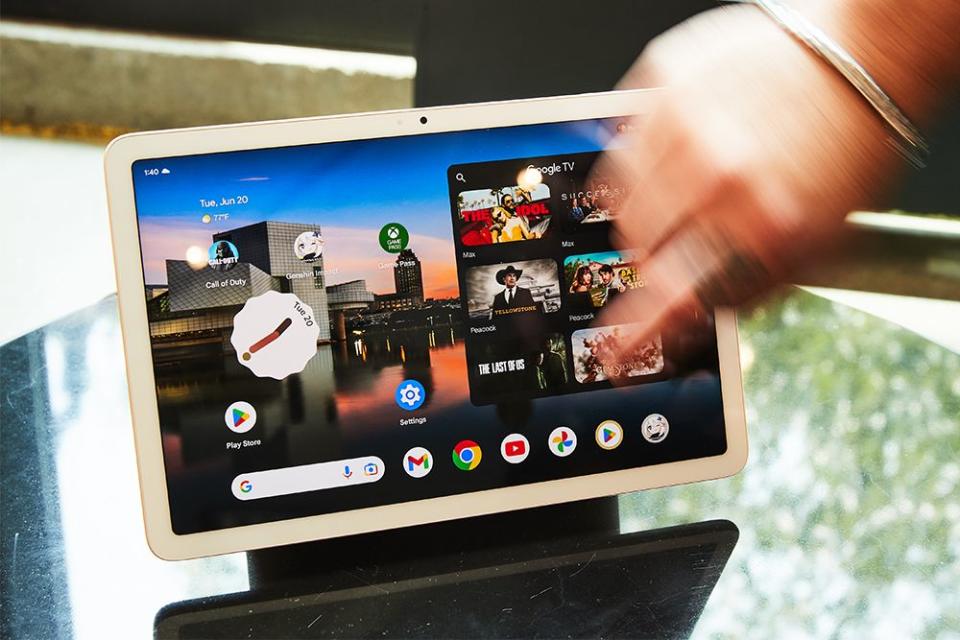
I’ve often reached for the older iPad sitting on my coffee table to discover it's either dead or misplaced by my fiancée. The Pixel Tablet solves this, because it’s always on the charging dock, ready to go. While it snaps onto its base with ease, pulling it off requires a bit more force, which I find is a good thing. You don’t want your new tablet dropping from a ledge with the slightest bump or breeze. Google sells the speaker charging bases separately, so you can buy multiples and dock it whichever rooms you wish. For example, in the kitchen, this is perfect for recipes, but in the office it serves as a secondary monitor for video calls. But, at $129 for each additional station, is pricey, because these can’t function as a standalone smart speaker unless the tablet is docked—a sizable missed opportunity.
Streaming Powerhouse With Capable 3D App Performance
Google manufactures its own Tensor processor chip in-house, much like like how Apple does with its silicon. This ensures its hardware is specifically optimized to eek the most out of the software without any bugs. Google’s chip is able to make efficiency tweaks on the fly to adapt to the Android workload in a way that third-party manufacturers like Samsung and OnePlus can’t with their Android tablets. Although its specs sound meager on paper, I’m happy to report that the 128GB of memory and 8GB of RAM are plenty to handle everyday tasks like browsing the web or watching videos. Android OS 13 runs buttery smooth on the Pixel Tablet. Admittedly, the lack of touch haptics takes some getting used to coming from the Apple ecosystem. However, each swipe feels fluid: dragging left takes you to news, pull up to go home or app dock so you can find your most used programs, or multitask in a split-screen view with two apps open at one time. Despite its screen staying locked to 60 hertz, scrolling with the Pixel Tablet is snappy.
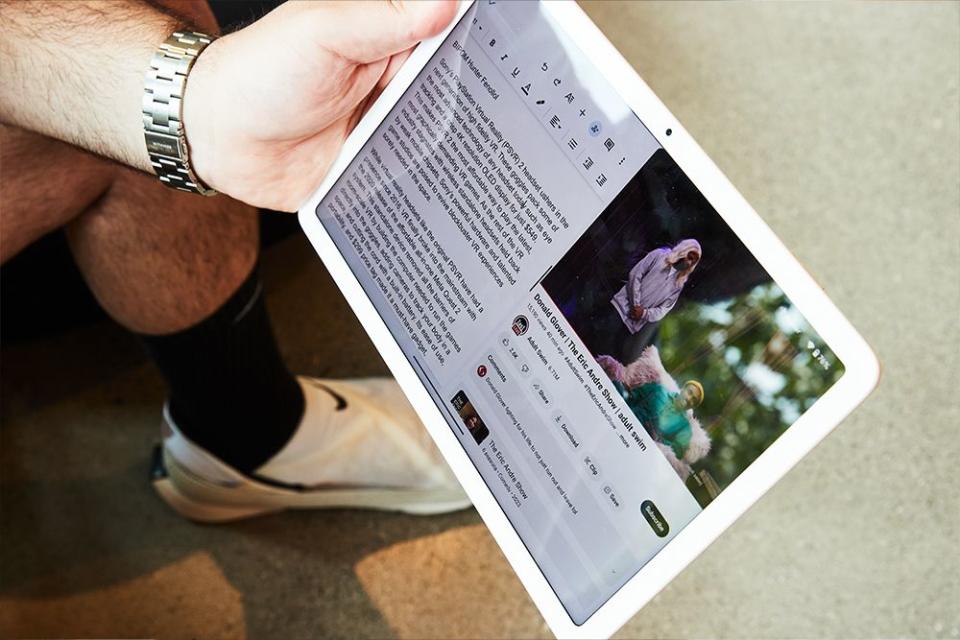
After tapping a website link, the Pixel Tablet loads pages within two seconds, on average. I timed the speed from open to fully loading AMP news links, Reddit threads, and retail pages chock full of images and text. I experienced no noticeable hangups or chugs even when playing the most demanding 3D mobile games like “Diablo Immortal.” And the fact that these apps look gorgeous on the Pixel Tablet speaks to Google’s biggest achievement: getting all of its first party and some of the biggest Android apps from external developers to natively support the larger screen as opposed to blowing up a phone app to fit the extra space.
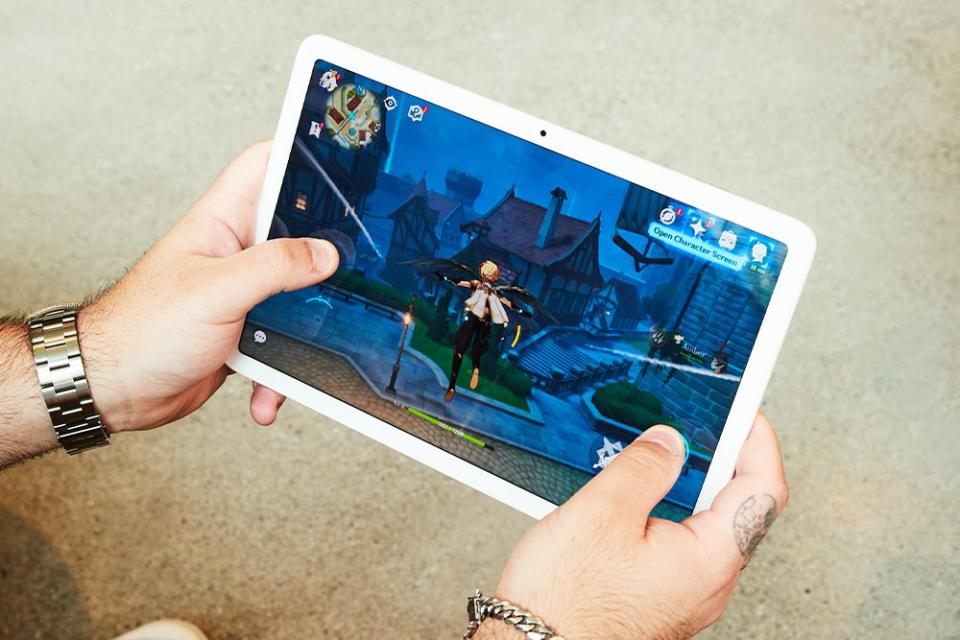
The Pixel Tablet runs the most popular and graphically demanding titles like “Call of Duty Mobile” and “Genshin Impact” smoothly with HD texture packs installed. And its higher resolution screen can better show object textures like the intricacies of an ornate pot in a library in Genshin or the blades of grass in CoD. Interface elements like like mini-maps, action buttons, and health bars look crisp when blown which makes them easier to see and use—a major improvement over a phone. And with a cloud gaming service, remote play, or your Steam Library, you can use the large screen to stream the latest console games at Full HD resolution with no perceptible lag at 60 hertz with a separate Bluetooth controller.
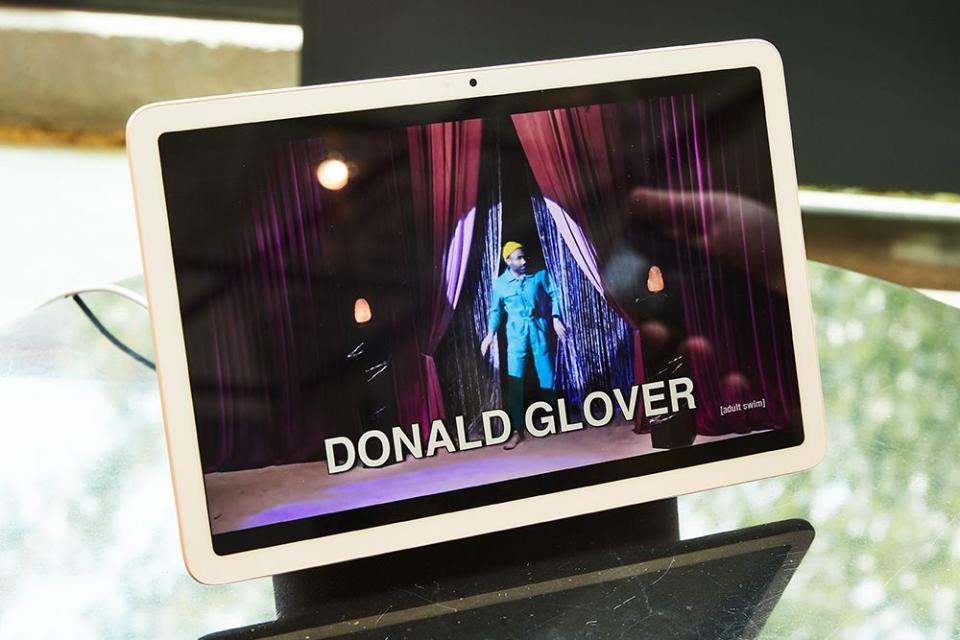
Big screen Android apps still aren’t going to outperform Apple’s A14 Bionic and onward chips, which can run higher resolutions at up to 120 hertz. However the Tensor’s computing power and overall 3D rendering performance is impressive for the price. The Pixel Tablet is far and away a streaming-centric device—its battery is most efficient when streaming video, games, or books, where I regularly saw over ten hours of usage. But when taxing the power of the tablet’s interior hardware, even the most demanding titles ran effortlessly side-by-side while multitasking with Google Chrome tabs open in the split view workspace. The battery even lasts around six hours with high-brightness video or demanding 3D gaming sessions.
But not everything is smooth sailing. One frustrating problem I ran into while testing the Pixel was incompatible apps. For example, I often use Geekbench and 3DMark synthetic tests to assign scores to computing hardware and show its performance power to competing devices. These two apps were inaccessible from the Google Play Store on a brand new tablet, meanwhile I know that I could download them on any iPad released within the last four years.
Feature Focused For Added Value
Much of the value I see in the device is the ability to use it as a communal tablet with other household members. You can load multiple Google profiles so the menu layout, apps, and wallpapers are tailored to each user as if it’s their own device. Plus the tablet can recognize voices, so you can ask the assistant for your calendar events or notes and it knows which person to pull up details for. On my fiancee's profile, it has her shopping and design apps front and center, jam-packed with widgets. But when I log into my profile, the tablet displays a skyline with my gaming apps and my custom recommendations for new mobile games and movies.
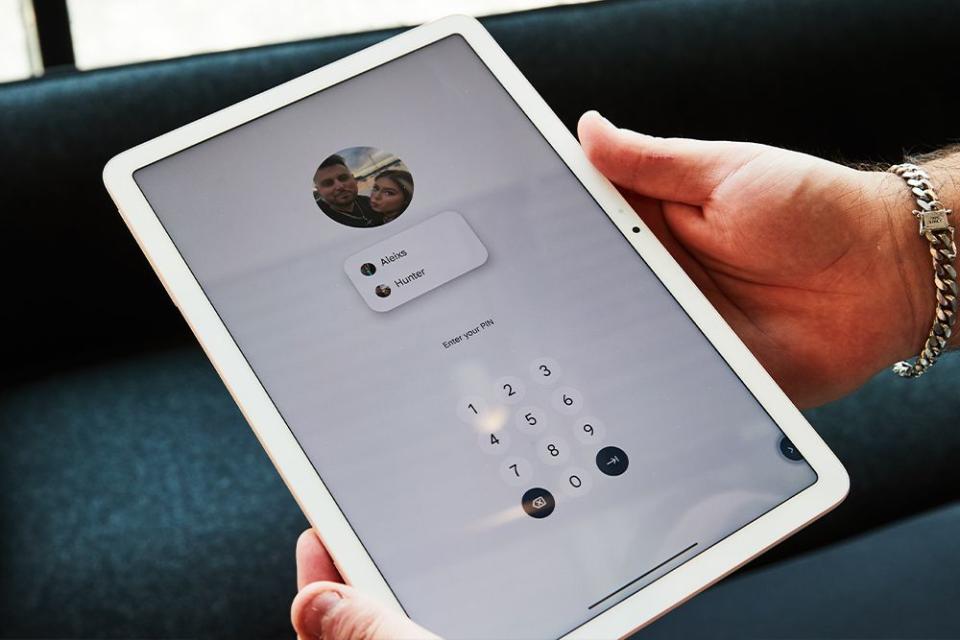
The Pixel Tablet also gets a lot of features that we like about the Pixel phones. One of these is Now Playing which passively listens to and identifies music on your lockscreen so you can see what played on a radio station or a show. But the seamless handoff experience with the dock is the Pixel Tablet’s biggest feature. When docked as a smart display, it shines as a home controller, smart assistant, and the only tablet that can be used as a Chromecast screen. I had no problem beaming up YouTube videos from my iPhone 13 to the Pixel Tablet while washing dishes in the kitchen. Google opted to hide the smart home dashboard behind a single button which is an annoyance that is hopefully fixed in a future update to allow the screen to stay locked to a dashboard if the user chooses.
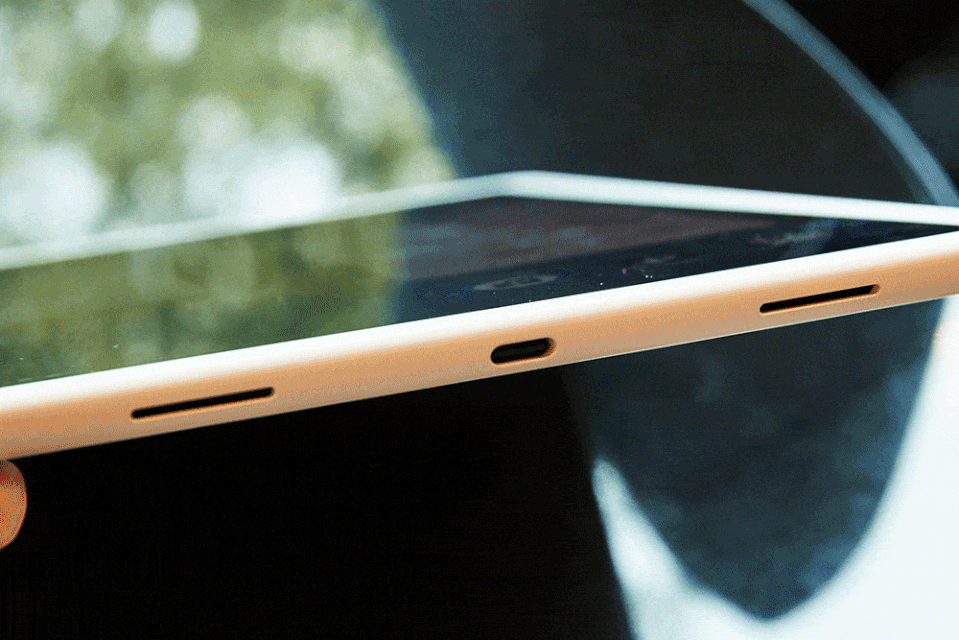
The built-in front and rear cameras are 8MP, which is plenty sharp for images that spring to life with AI processing. They also have the Pixel post features like Photo Unblur and Magic Eraser for one-touch edits. Picture-perfect photos are just one of the camera’s talents; the quality is suitable enough to take a Google Meet or Microsoft Teams video call. The camera can easily track you in a space and keep you in focus. That said, I wouldn’t use it to shoot or edit a video, but you could easily work with HD content. The Pixel Tablet excels in less-demanding content creation areas like photo editing, podcasting, and making music, but there’s not enough power to edit 4K footage or create 3D animations.
The Verdict
Google’s first-generation Pixel tablet has some minor kinks but is an excellent value for most people considering a tablet under $500. Its focus is on casual usage rather than productivity, but this helps you squeeze out more usability in your day-to-day tasks. Its smart home and casting features, plus its effortless pull-and-play sharing with multiple Google profiles, make it my favorite Android tablet yet. And that sleek concept is a game changer to what a tablet can be in the home.
Those who prefer a tablet for demanding 3D workflows or gorgeous OLED displays will lean towards an iPad Pro or OnePlus Pad. Almost anybody else will appreciate the Pixel’s value now without waiting on the next generation to ship. With five years of promised updates and the smart decision to only charge the battery up to 90 percent while on the dock to extend its battery life, I can see the Google Pixel tablet’s lifespan outlasting other third party Android tablets for an iPad-like standard of reliability. And with its docking capabilities I’d say the Pixel Tablet even has a slight advantage. I’m looking forward to seeing what this innovation spurs from the competition.
You Might Also Like

